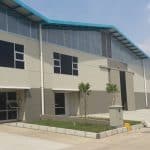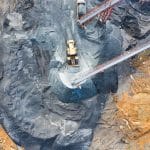Liga Asuransi – Dear readers, how are you? I hope your business is running well, as planned.
Today’s need for electric energy is also increasing in line with the increasing demand for electric vehicles, cars, and motorcycles.
Thankfully, Indonesia has many alternative sources of electricity, one of which is from hydroelectric power plants (HPP)
As a senior insurance broker, this time, I will discuss the risk management and insurance of the operation of hydroelectric power plants.
I want to welcome those just visiting this website for the first time. This website mainly discusses risk management and insurance for various types of industries. If you are interested, please share it with your colleagues, so they understand like you.
It must be admitted that from the point of view of the insurance industry, hydroelectric companies are considered high risk, and only a few insurance companies can provide insurance guarantees.
A hydropower plant or hydroelectric power plant is a facility that generates electricity by harnessing the kinetic energy of flowing water. The basic principle behind hydropower generation is to convert the potential energy of water stored at a high elevation into electrical energy.
Hydropower plants typically consist of a dam or reservoir that stores water and a power plant that converts the energy of falling water into electrical energy.
The dam or reservoir stores the water, which is then released through a penstock or a large pipe. The water flows through the penstock, which leads to a turbine. The force of the water turns the turbine, which rotates a generator that produces electricity.
INDONESIA’S POTENTIAL FOR HPP
According to the Indonesian Ministry of Energy and Mineral Resources, the country’s estimated hydropower potential is around 75 GW. However, as of 2021, Indonesia’s installed hydropower capacity was only about 5.6 GW, representing less than 10% of the country’s total potential.
The estimated investment of a hydropower plant per megawatt (MW) can vary widely depending on various factors such as the size of the plant, location, and other project-specific factors. However, on average, the investment cost for a hydropower plant can range from $1 million to $5 million per MW.
Due to the economies of scale, small-scale hydropower plants with less than 10 MW capacity typically have higher investment costs per MW. In contrast, larger hydropower plants with a total of over 100 MW tend to have lower investment costs per MW due to the benefits of scale.
THE RISKS OF HYDROPOWER PLANTS
Hydropower plants (HPPs) are considered high-risk from an insurance perspective due to their operations’ unique challenges and hazards. Here are reasons HPPs are considered high-risk Natural Disasters, Equipment Failures, Liability Risks, Environmental Risks, and Cybersecurity Risks.
It is essential to note that the risks and accidents associated with the operation of HPPs can be reduced through proper planning, design, and maintenance of the plant and the implementation of appropriate safety measures.
The operation of Hydro Power Plants (HPPs) involves several risks and accidents, including:
- Dam Failure
The failure of a dam can result in catastrophic flooding downstream. This can happen due to natural disasters, such as earthquakes, heavy rainfall, or structural problems with the dam.
- Landslides
Landslides can occur near the reservoirs of HPPs, which can result in the blockage of rivers or streams and lead to flooding.
- Turbine Failure
Turbine failure can occur due to mechanical problems or lack of maintenance. This can damage the turbine, generator, or other equipment, leading to power outages and potentially hazardous workplace situations.
- Sedimentation
HPPs can cause sedimentation, where sediment accumulates in the reservoir and can reduce the reservoir’s storage capacity over time.
- Environmental Impacts
HPPs can have significant environmental impacts, including the loss of habitat for fish and other wildlife, changes to the river or stream’s natural flow, and impacts on water quality.
- Public Safety
The operation of HPPs can pose risks to public safety, particularly during construction and maintenance activities or extreme weather events.
CAUSES OF DAM FAILURES
It is important to note that dam failure is rare and that HPPs are designed and built with safety measures to prevent or mitigate the consequences of a dam failure. However, it is essential to continuously monitor the dam’s condition and take appropriate measures to prevent potential risks.
Dam failure in a Hydro Power Plant (HPP) can occur due to a variety of reasons, including:
- Natural Disasters
Natural disasters such as earthquakes, floods, landslides, or heavy rainfall can lead to dam failure. These events can cause the ground to shift, damage the dam’s structure, or cause the water level in the reservoir to rise beyond the dam’s capacity.
- Design and Construction Deficiencies
Poor design or construction of the dam can lead to its failure. This can include inadequate foundations, insufficient drainage systems, or faulty materials used in dam construction.
- Aging and Lack of Maintenance
Over time, dams can deteriorate due to aging and lack of maintenance. This can cause cracks and other structural problems that weaken the dam’s ability to hold water.
- Human Error
Human error, such as the dam’s gates, valves’ incorrect operation, or insufficient monitoring of the dam’s condition, can lead to dam failure.
- Sabotage or Terrorism
Intentional damage to the dam, either through sabotage or terrorism, can also result in dam failure.
THE DAM FAILURE PREVENTION
To avoid dam failure in a Hydro Power Plant (HPP), it is essential to take appropriate measures throughout the dam’s lifespan, from design and construction to operation and maintenance. Here are some ways to avoid dam failure:
- Proper Design and Construction
HPP dams should be designed and constructed by experienced professionals following international guidelines and regulations. It is essential to use quality materials, adequate foundations, and drainage systems to ensure the dam’s stability and strength.
- Regular Inspection and Maintenance
Regular inspection and maintenance are critical to identifying structural or mechanical problems that could lead to dam failure. Dam owners should have an inspection and maintenance program that includes visual inspections, non-destructive testing, and monitoring of the dam’s instrumentation and sensors.
- Emergency Preparedness Plan
HPP owners should develop an emergency preparedness plan, including risk assessment, evacuation procedures, communication protocols, and emergency response teams. It is crucial to regularly test and update the plan and provide training to all personnel involved in the emergency response.
- Risk Management
HPP owners should conduct a risk assessment to identify potential hazards and risks associated with the dam’s operation. They should implement appropriate risk management measures, such as safety barriers, warning systems, and surveillance cameras.
- Community Engagement
HPP owners should inform the local communities about the dam’s operation, potential hazards, and emergency procedures. Establishing a communication protocol with the local authorities and emergency services is essential.
By following these measures, HPP owners can avoid dam failure and ensure the safety of their facilities, personnel, and the surrounding communities.
THE DAM FAILURES ACCIDENTS IN INDONESIA
There have been several dam failures and accidents in Indonesia. Here are some significant incidents, but not all were with HPP.
- Banjir Kanal Timur (East Flood Canal) Dam Failure (2007)
The Banjir Kanal Timur Dam in Bekasi, West Java, failed in February 2007 due to heavy rainfall, causing severe flooding in the surrounding areas. The failure resulted in the displacement of thousands of people, damage to homes and infrastructure, and several deaths.
- Situ Gintung Dam Failure (2009)
The Situ Gintung Dam, located in Tangerang, Banten, failed in March 2009 due to heavy rainfall, causing a flash flood that killed more than 100 people and destroyed hundreds of homes.
- Kedung Ombo Dam Accident (2015)
The Kedung Ombo Dam, located in Central Java, experienced a significant landslide in February 2015, causing a breach in the dam and flooding in the surrounding areas. The incident resulted in the displacement of thousands of people and damage to homes and infrastructure.
- Batu Ampar Dam Failure (2021)
The Batu Ampar Dam in North Sumatra failed in April 2021 due to heavy rainfall, causing flooding in the surrounding areas. The incident resulted in the displacement of thousands of people and damage to homes and infrastructure.
It is essential to note that dam failures and accidents can have significant consequences for the surrounding communities, and it is crucial to take appropriate measures to prevent such incidents from happening.
THE CAUSES OF LANDSLIDE
Landslides can significantly cause damage and failure in Hydro Power Plants (HPPs). Landslides can occur due to various factors, including natural and human-made causes. Here are some of the common causes of landslides in HPPs:
- Geology
The geological conditions of the area where the HPP is located can increase the risk of landslides. Areas with steep slopes, unstable soil, and loose rock formations are more prone to landslides.
- Weather
Heavy rainfall, snowmelt, or sudden temperature changes can cause landslides. These weather events can weaken the soil and increase the risk of landslides.
- Earthquakes
Earthquakes can cause landslides by shaking the ground, causing soil and rocks to shift and destabilize.
- Human activities
Human activities, such as construction, mining, and deforestation, can alter the natural landscape, destabilize the soil, and increase the risk of landslides.
THE CAUSES THE TURBINES FAILURES
There can be various reasons for turbine failure in Hydro Power Plants (HPPs). Here are some of the common causes of turbine failure:
- Wear and Tear
Turbines in HPPs are subject to wear and tear due to the constant water flow and high operating speeds. Over time, this can cause damage to the turbine blades, bearings, and seals, leading to reduced efficiency and eventual failure.
- Cavitation
Cavitation occurs when the pressure of water drops below the vapor pressure, causing bubbles to form and collapse, resulting in erosion of the turbine blades. This can cause vibrations, noise, and, eventually, turbine failure.
- Corrosion
Turbine components, such as blades and casings, can corrode over time due to exposure to water and air, leading to reduced efficiency and eventual failure.
- Overloading
Turbines can fail due to overloading, which occurs when the turbine is subjected to more water flow than it can handle. This can cause damage to the turbine blades and bearings, leading to failure.
- Manufacturing Defects
Manufacturing defects can cause turbine failure due to poor material quality, improper assembly, or incorrect machining.
AVOIDANCE OF TURBINE FAILURES
Implementing proper maintenance and inspection practices is essential to avoid turbine failure in Hydro Power Plants (HPPs). Here are some measures that can help prevent turbine failure:
- Regular Maintenance
Regular maintenance of HPP turbines is crucial to avoid failure. HPP operators should have a comprehensive maintenance program that includes regular cleaning, inspection, and replacement of worn or damaged parts.
- Vibration Monitoring
Vibration monitoring can detect early signs of turbine failure. HPP operators should implement vibration monitoring systems to detect abnormal vibrations and take appropriate actions to prevent turbine failure.
- Operating Procedures
Operating procedures should be developed and followed strictly to avoid overloading and excessive wear and tear of turbines. HPP operators should ensure that turbines are operated within their design limits and not subjected to more water flow than they can handle.
- Quality Control
Turbines should be designed and manufactured to meet international standards and specifications. HPP operators should ensure that their turbines are inspected and tested for quality control during manufacturing.
- Upgrades and Retrofits
Upgrades and retrofits can improve the performance and efficiency of turbines and extend their lifespan. HPP operators should consider upgrading or retrofitting their turbines to avoid failure and increase power output.
THE TYPES OF INSURANCE NEEDED FOR HYDROPOWER PLANT
Hydropower plants (HPPs) require several types of insurance coverage to protect against various risks and potential losses. Here are some of the main types of insurance that are typically needed for HPPs:
This covers physical damage to the HPP’s infrastructure and equipment, such as the dam, turbines, and generators, caused by fire, natural disasters, or other events.
- Business Interruption Insurance
This covers lost income and other expenses resulting from disruptions to the HPP’s operations, such as unexpected shutdowns, delays caused by equipment breakdowns, or natural disasters.
This covers damages and legal expenses resulting from third-party claims of bodily injury, property damage, or other losses caused by the HPP’s operations, such as flooding or landslides.
- Workers’ Compensation Insurance
This covers medical expenses and lost wages for employees who are injured on the job.
- Environmental Liability Insurance
This covers costs associated with environmental damage or pollution caused by the HPP’s operations, including clean-up and restoration costs.
- Cyber Insurance
This covers losses from cyber-attacks, data breaches, or other cyber-related incidents that could disrupt the HPP’s operations or compromise sensitive data.
HPP operators should work with an experienced insurance broker to identify their needs and obtain appropriate coverage.
WHY IPP NEEDS AN INSURANCE BROKER?
Independent power plant (IPP) companies that operate hydropower plants typically need the services of an insurance broker to ensure that they have adequate insurance coverage to protect against potential losses and liabilities. Here are some reasons why IPP companies may choose to work with an insurance broker:
- Expertise and Knowledge
Insurance brokers have specialized expertise and knowledge of the insurance market. They can help IPP companies navigate the complex insurance landscape to identify their specific insurance needs and obtain appropriate coverage.
- Access to Multiple Insurance Markets
Insurance brokers work with multiple insurance providers and can access a wide range of insurance products and options, allowing them to find the best coverage and pricing for their clients.
- Customized Insurance Solutions
Insurance brokers can work with IPP companies to develop customized insurance solutions tailored to their risks and liabilities, providing comprehensive coverage that addresses all potential scenarios.
- Claims Management
Insurance brokers can help IPP companies manage insurance claims by working with insurance providers to ensure that claims are processed quickly and fairly, minimizing disruptions to the company’s operations.
- Risk Management and Prevention
Insurance brokers can also provide risk management and prevention services to help IPP companies identify potential risks and hazards and implement mitigation strategies, reducing the likelihood of accidents, incidents, and losses.
Working with an insurance broker can help IPP companies of hydropower plants ensure adequate insurance coverage to protect against potential losses and liabilities while providing expert guidance on risk management and prevention.
One of the leading insurance brokers in Indonesia focusing on Hydro Power Plant is L&G Insurance Broker.
For all your insurance needs, please call L&G now!
—
LOOKING FOR INSURANCE PRODUCTS? DON’T WASTE YOUR TIME AND CALL US RIGHT NOW
24-HOUR L&G HOTLINE: 0811-8507-773 (CALL – WHATSAPP – SMS)
website: lngrisk.co.id
E-mail: customer.support@lngrisk.co.id
—















